There are two ways to ruin a trip to Rome—overplan or not plan at all. Do the former and you’ll leave exhausted. Do the latter and you’ll find yourself having a pity party in hours-long lines. Luckily for you, we’ve helped plan loads of trips to Rome and have it down to a science. This is your ultimate cheat sheet for planning a trip to Rome.
Step-by-Step Guide to Planning a Trip to Rome, Italy
We’ve mapped out the best steps to plan a trip to Rome. Click on the link to jump to the section.
How to Get to Rome and Around the City
Part of planning a trip to Rome is understanding the best way to get there and how to get around the city.
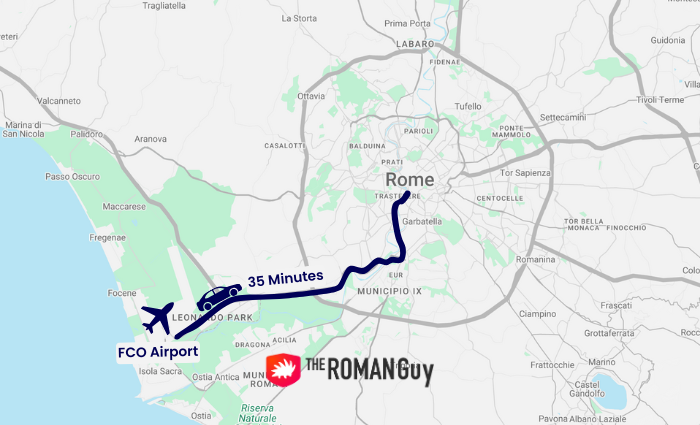
- Closest airport: Fiumicino (FCO), 35 to 45 minutes by taxi.
- Train station: Roma Termini, best if you’re coming from Venice, Florence, Milan, or Naples.
- How to move around Rome: The best way to get around Rome is walking. Most attractions are within a 15 to 20 minute walk of each other. The exception to this rule is the Vatican and Spanish Steps, which are easy to get to by Metro Line A.
Choose the Best Time to Visit Rome
Rome is a year-round travel destination, but when you go will shape everything else: prices, crowds, weather, and even the general vibe of the city. Here’s what to expect:
- Spring (April–Early June): Warm days and cool nights, blooming flowers, and more tolerable crowds. (Our favorite time in Rome!) Beware of Easter, which is magical, but can feel very busy.
- Summer (Late June–August): Hot, busy, and full of energy. If you have kids out of school, it makes sense, but understand that the Roman Forum is one of the hottest places in Europe during the summer.
- Fall (September–October): Warm days, fewer tourists, and best for foodies thanks to all the fresh produce. Leaves start changing color, and in October, Common Starlings migrate through Rome in the millions. Something they’ve been doing longer than civilization has existed there.
- Winter (December–February): Chilly, but plenty of sunshine. A great option if you want to see Rome without the crowds. Plus, from early December to late January, Christmas lights hang throughout the city. Just keep in mind that humidity rises, and it feels colder in late January and February.
And decide how many days to spend in Rome:
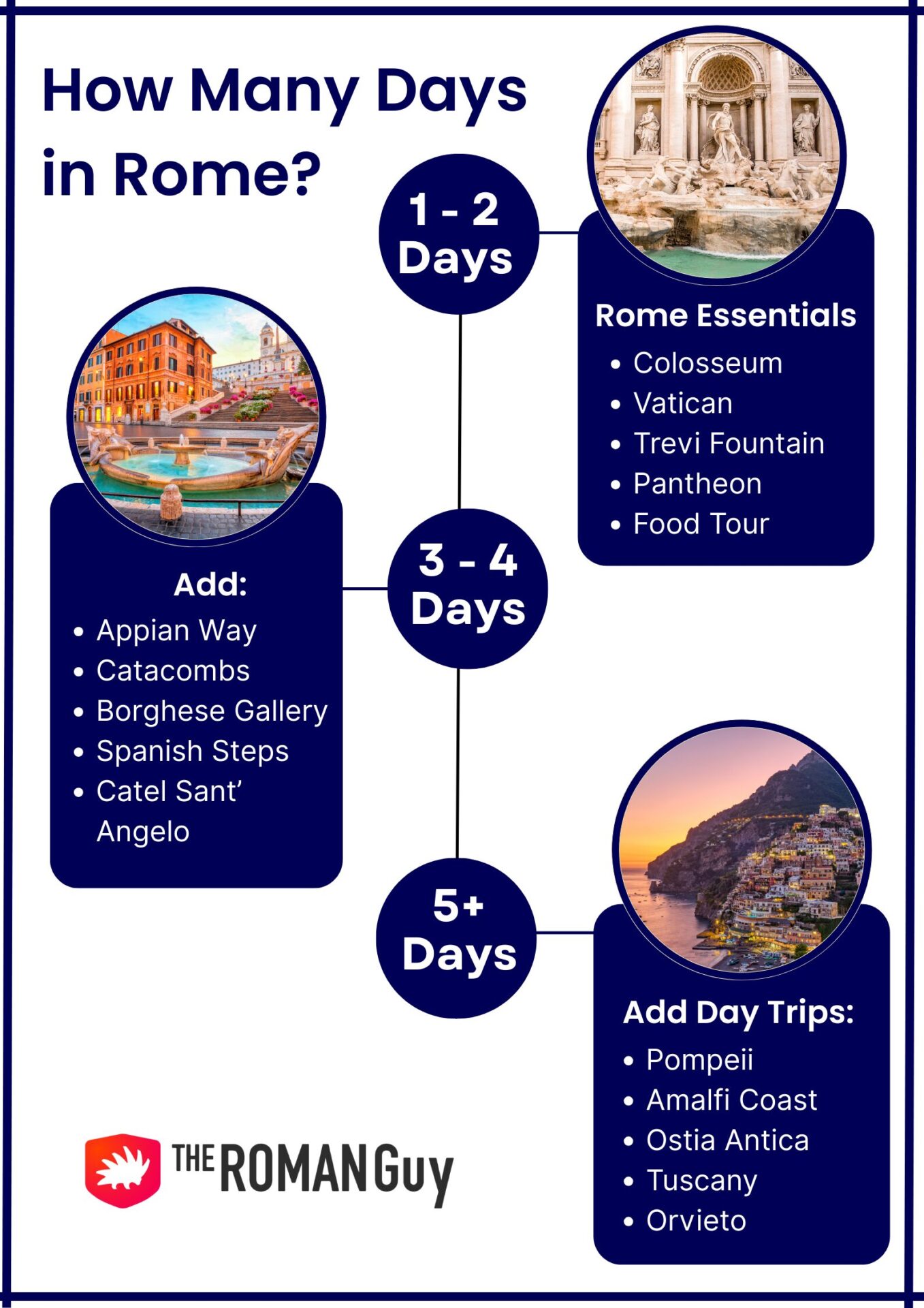
- 1–2 days: Perfect if Rome is just one stop on a bigger Italy itinerary. Focus on the essentials—tour the Colosseum, visit the Vatican, and squeeze in a couple of memorable meals.
- 3–4 days: Gives you time to soak up more of the city. Hit all the headline sights, add a food tour or a leisurely bike ride, and linger over aperitivo in lively piazzas.
- 5 days or more: Ideal for art lovers and slow travelers. Do everything above, plus take a Pompeii day trip and wander through Rome’s underrated museums and parks.
For a full, detailed guide, check out our article on how many days to spend in Rome.
List the Top Attractions You Want to See in Rome
Next, take a step back and figure out what you’re really going to Rome for. If it’s your first visit, you’ll probably want to see the Colosseum and the Vatican, and join a food tour. Book these in advance. Then, add the rest to a “maybe” list so you can dip into it when you have extra time and energy. Below, you’ll find the top sights in Rome—click on the link for more information.
Got your favorites circled? The next part of this step is to reserve tickets or a guided tour of your top three. We recommend:
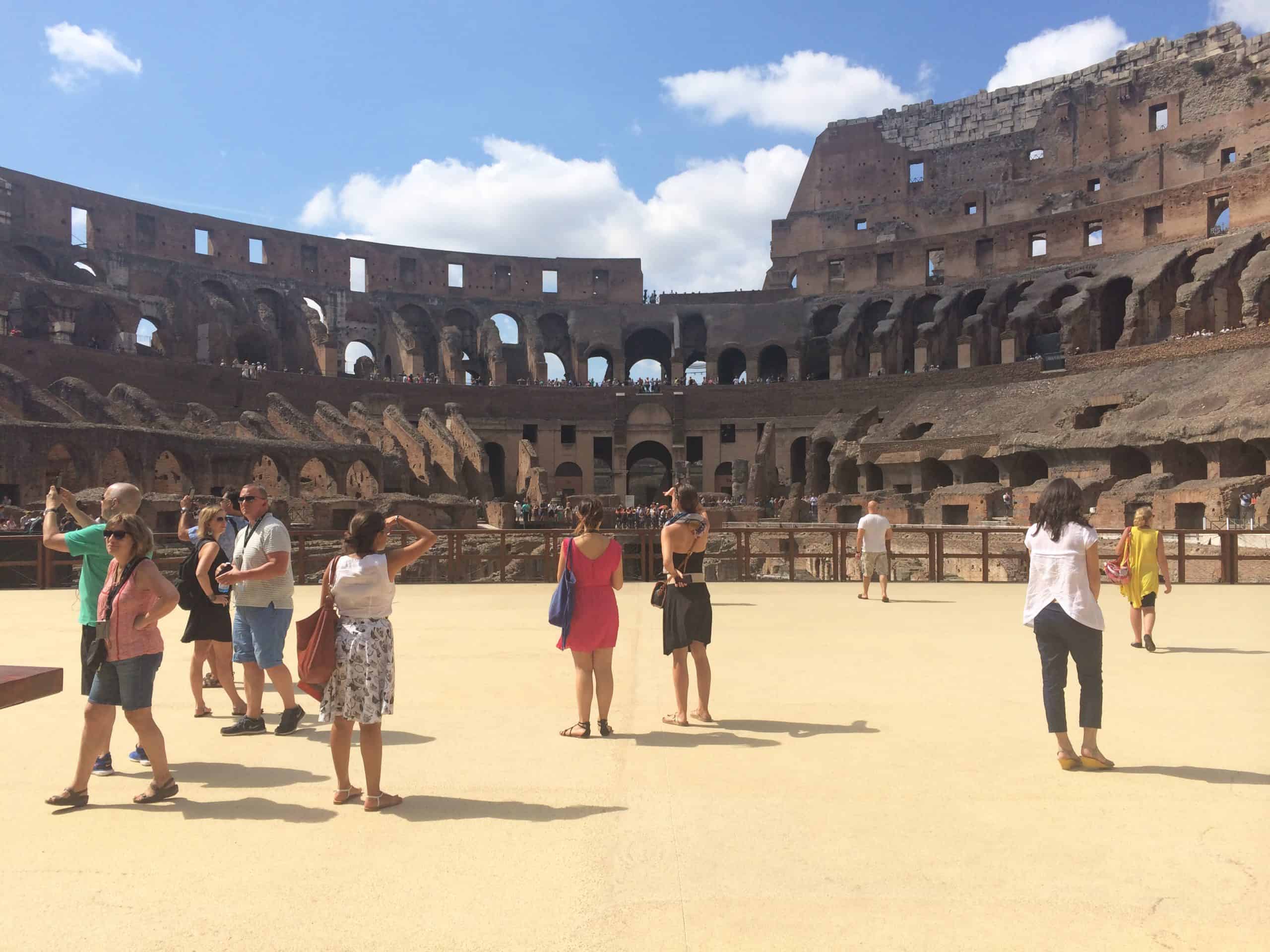
Special Access Colosseum Arena Floor Tour through the Gladiator’s Gate
3 Hours | €€
Walk in the footsteps of gladiators on the Colosseum floor and see the Roman Forum and Palatine Hill.
Book Now!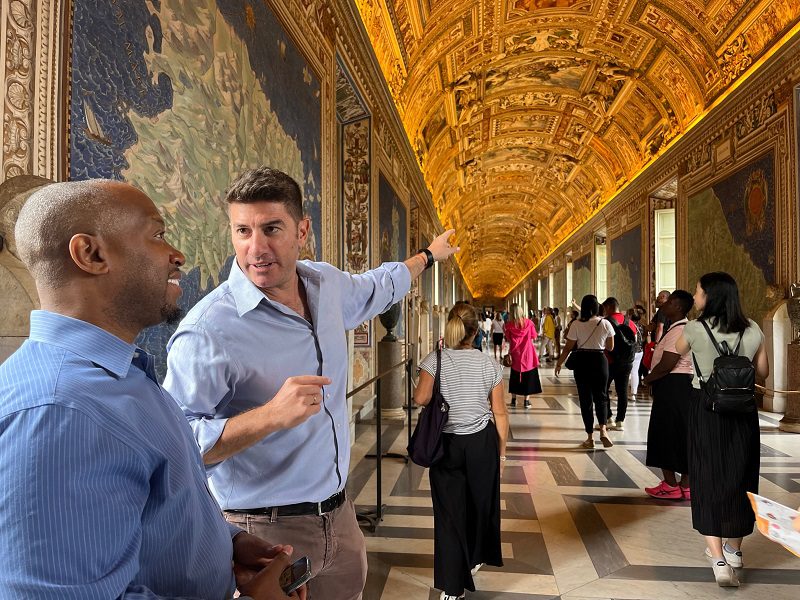
Privileged Entrance Vatican Tour with Sistine Chapel & St. Peter’s Basilica
3 Hours | €€€
Skip the line and gain direct access to the Raphael Rooms, Creation of Man & Scala Regia passageway.
Book Now!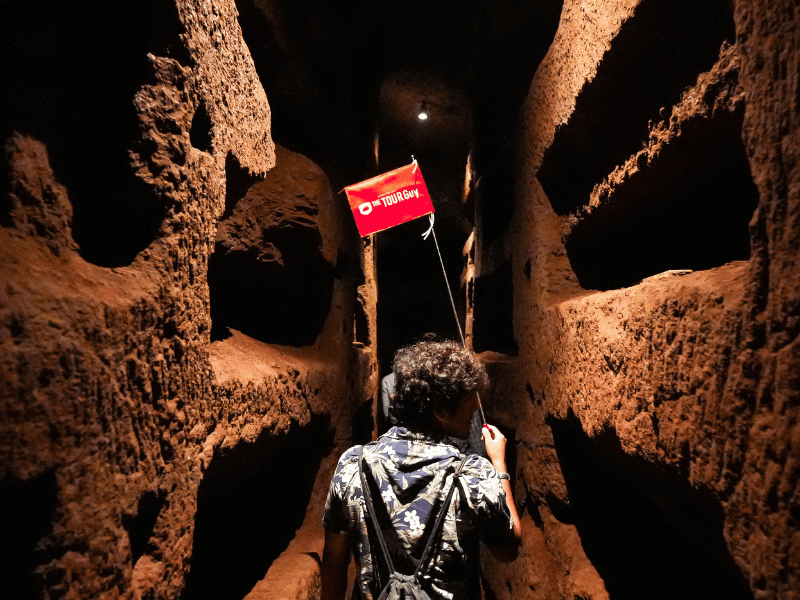
Rome Catacombs Tour and Capuchin Crypts with Transportation
3.5 Hours | €€
Skip the line to explore the creepy underground world of Roman tombs then visit the Mouth of Truth.
Book Now!Create a Flexible 3 to 5 Day Rome Itinerary
Now that you’ve got your priorities sorted, it’s time to sketch out your trip. Remember, keep it light and flexible.
For inspiration, check out these Rome itineraries:
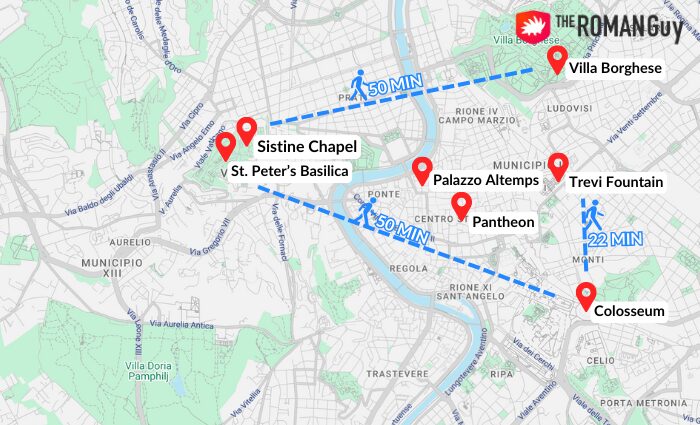
- Pick one headliner per day (Colosseum, Vatican, Borghese, day trip).
- Pair with one lighter activity (food tour, bike ride, sunset viewpoint).
- Cluster by neighborhood so lunch isn’t a cross‑town ordeal.
- Leave mid‑afternoon empty for espresso, market stalls, or a nap.
Book the Best Place to Stay in Rome
You’ve got your dates, your must-dos, and a loose plan. The next step is to decide where to stay in Rome. But don’t pick a place just because it’s near the Colosseum or the Vatican. Think about what kind of neighborhood you want to come home to at the end of the day. Charming and quiet? Lively and local? Somewhere with wine bars around the corner?
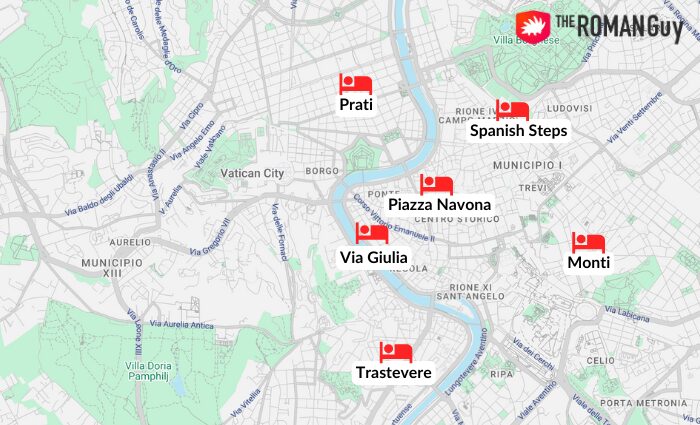
- Via Giulia: Quiet prestige, ivy‑draped palazzi, short walk to both Campo de’ Fiori and Trastevere wine bars.
- Piazza Navona / Pantheon: Classic postcard Rome; fountains at breakfast, baroque facades at bedtime.
- Spanish Steps: Designer shopping, sleek cafés, and late‑night people‑watching.
- Monti: Vintage stores, craft beer, bohemian corners, quick stroll to the Colosseum.
- Trastevere: Cobblestones, trattoria buzz, and alfresco bars that keep the party humming.
- Prati / Vatican: Wide boulevards, boutique shopping, and easy access to St. Peter’s.
Top Hotels in Rome
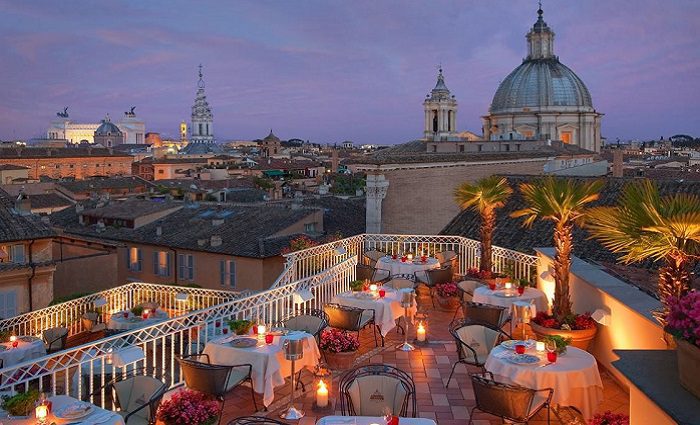
Bio Hotel Raphael ⭐⭐⭐⭐⭐
Piazza Navona • Terrace
Luxury hotel with a rooftop restaurant plus spacious and calming suites near Piazza Navona.
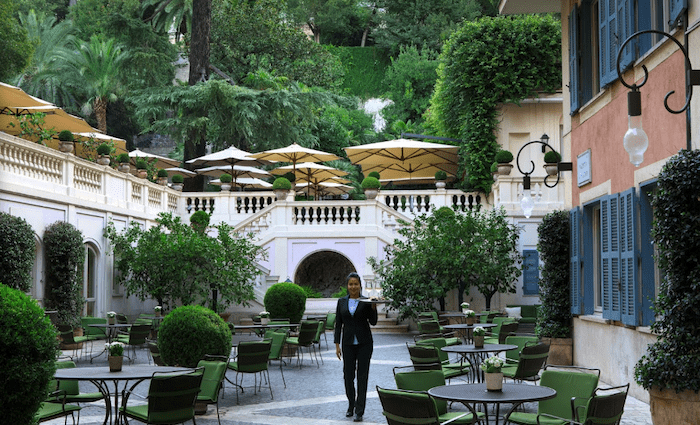
Hotel de Russie ⭐⭐⭐⭐⭐
Timeless Luxury • Spanish Steps
Popular hotel for VIPs like Bruce Springsteen with a classic Italian style and a dreamy courtyard.
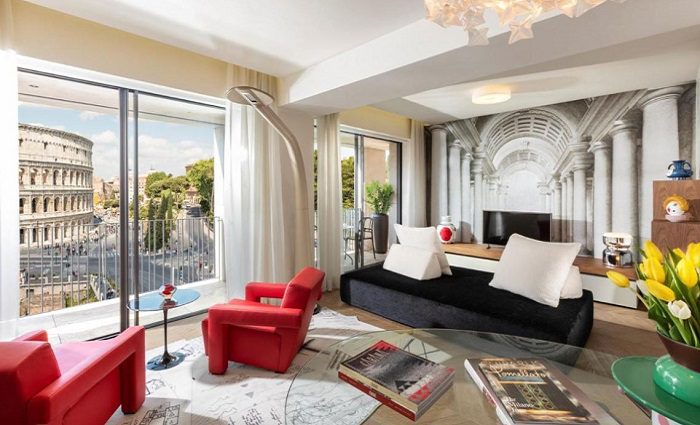
Palazzo Manfredi ⭐⭐⭐⭐⭐
Luxury • Near Colosseum • Terrace
Wake up to views of the Colosseum and enjoy meals on a stunning terrace in this fab hotel in Monti.
Find Great Places to Eat in Rome (Before You Arrive!)
Rome has incredible food, but that doesn’t mean every spot is incredible. In fact, if you wait until you’re hungry to start searching, odds are you’ll end up disappointed (and overcharged). Pick eight or so places you like from the articles below—near attractions, your hotel, and anywhere you might end up wandering. Drop pins in Google Maps now, and you’ll have a curated list ready for when you’re in Rome.
Best Restaurants Near:
Colosseum · Vatican · Trevi Fountain · Pantheon · Spanish Steps · Trastevere · Testaccio
Top Food Tours & Cooking Class in Rome
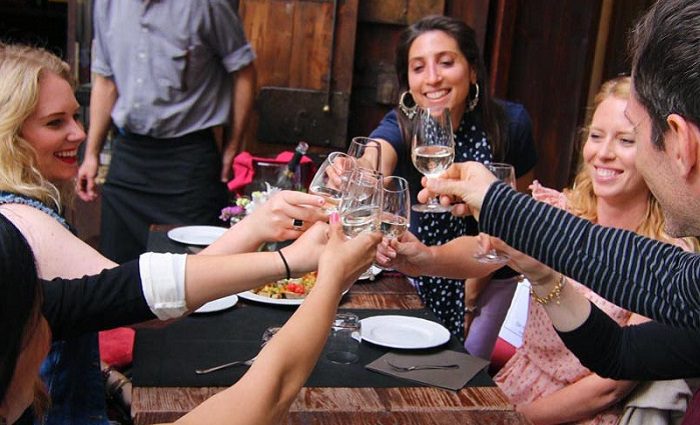
Trastevere Local Food Tour in Rome
3 Hours | €€
Join a culinary guide to savor authentic Roman food, such as tasty cheese, pasta, gelato, and wine.
Book Now!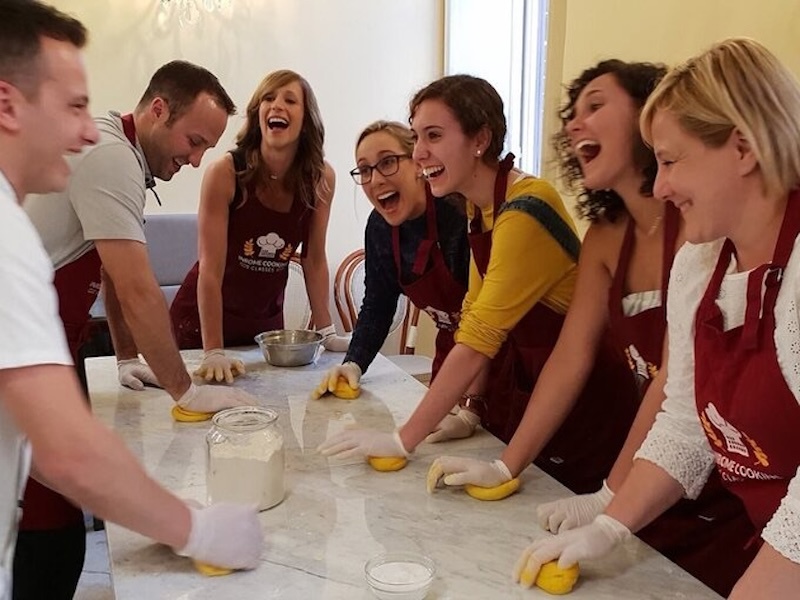
Authentic Pizza and Gelato Cooking Class in Rome
2.5 Hours | €€
Embark on an Italian culinary adventure in a 17th-century palace near Piazza Navona!
Book Now!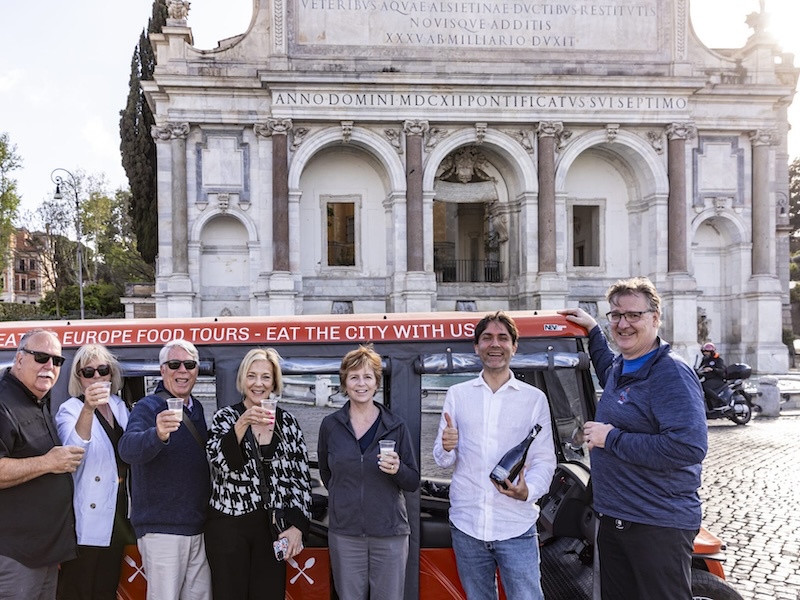
Rome Golf Cart Food Tour: Explore the City’s Iconic Sites and Cuisine
3.5 Hours | €€
Journey through time and taste on this small-group adventure.
Book Now!Double-Check Your Travel Details and Reservations
The last step to plan your trip to Rome is the practical stuff. Grab a glass of wine and knock these out in 15 minutes:
- Airport Transfer: Book a private ride with Amico Limo, or take the Leonardo Express train to Termini Station.
- eSIM: Buy one in advance so you land with data already working. You’ll pay around €20 total with yesim instead of the usual $10 per day roaming charge.
- Customs: Be sure to read up on how the new Europe Entry and Exit System (EES) works.
- Travel Insurance: Always worth it for the peace of mind.
- ATM Access: Know which bank ATMs are fee-free and alert your bank that you’ll be traveling.
- Language Prep: Learn a few basics (ciao, grazie, il conto, per favore) and download Google Translate.
- Packing List: Jot it down now and add to it as you go.
- Travel Docs: Take photos of your passport and screenshot bookings.
Extra Tips for Visiting Rome Like a Local
Want to feel like a seasoned Roman on day one? Keep these under‑the‑radar pointers in your back pocket.
- Drink from the nasoni fountains. The cast‑iron spouts gushing cold water are safe, free, and everywhere. Bring a reusable water bottle and fill as you explore.
- Plan dinner for after 8 p.m. Kitchens don’t hit their stride until then, and you’ll avoid eating with only tourists.
- Avoid driving inside the ZTL. Cameras police the historic center’s limited‑traffic zone. The last thing you want waiting at home is a ticket.
- Grab aperitivo in Testaccio. Prices are lower and snacks better than the center. We especially recommend the area around Piazza Testaccio.
- Carry coins for public restrooms. Most cost €1, and change is rarely given—stash a few in your pocket before heading out.
- Use WhatsApp to make restaurant reservations. Many places don’t accept walk-ins for dinner, and WhatsApp is your best friend to avoid roaming charges.
- Order coffee at the bar, not the table. It’s cheaper and faster—plus you’ll blend in with the locals.
Where to Go Before or After Visiting Rome
You didn’t fly all the way to Italy for one city. Here are three stops worth adding to your itinerary:
- Venice: It’s touristy. It’s overpriced. It’s also unlike anywhere else you’ve ever been. About 4 hours by train from Rome.
- Florence: The perfect mix of walkable, artsy, and delicious. Just 90 minutes away by high-speed train.
- Amalfi Coast: Cliffside villages, limoncello, and sweeping views, about 1.5 hours south of Naples. Rent a boat or sit back with a spritz.
Rome Trip Planning FAQs
The ideal time to visit Rome is spring (April–early June) or fall (mid‑September–October), when mild weather, blooming parks, and lighter crowds make sightseeing more enjoyable.
Plan at least three to four days in Rome so you can see headline attractions like the Colosseum and Vatican Museums while still enjoying leisurely meals and neighborhood strolls.
Yes, booking Colosseum and Vatican tickets or guided tours online before you travel saves up to 90 minutes of queuing and guarantees your preferred entry time.
Rome is generally safe, but like any major city you should watch for pickpockets around crowded sights and avoid accepting “free” bracelets or petitions in tourist areas.
The fastest transfer is the 32‑minute Leonardo Express train to Termini Station, though pre‑booking a private car offers door‑to‑door comfort after a long flight.
Credit cards work almost everywhere, but carry a few euros in coins for public restrooms, nasoni water‑fountain cups, and small cafés that impose minimum charges for card use.
Final Thoughts on Planning Your Rome Vacation
Rome comes alive when you slow down, wander aimlessly, and leave room for aperitivo. Use this guide as your jumping-off point, but let Rome surprise you a little too. For more tips, check out:

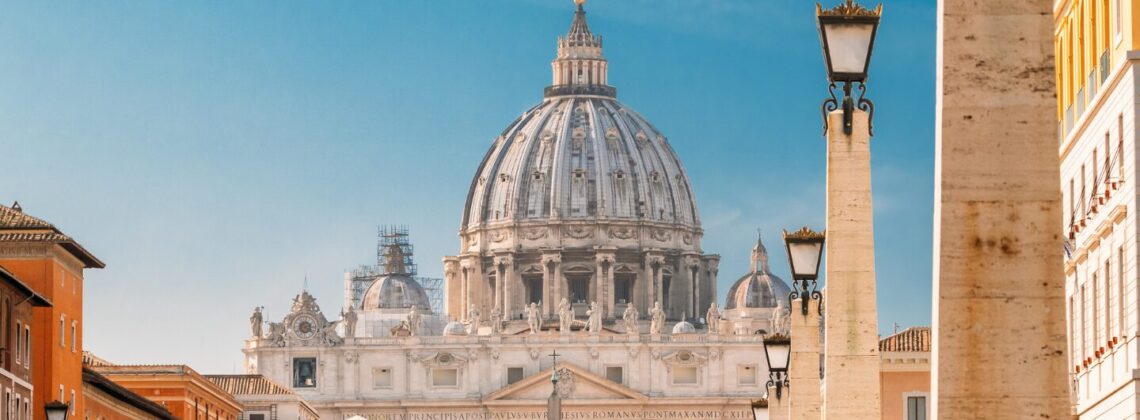
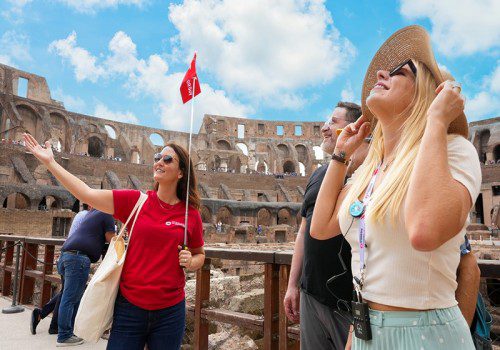
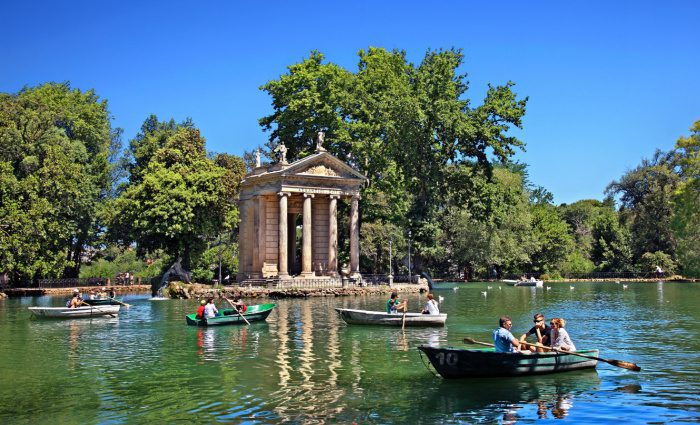
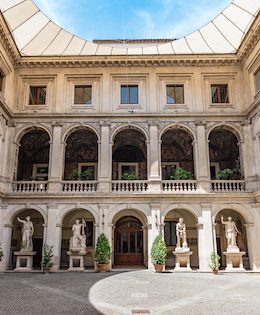
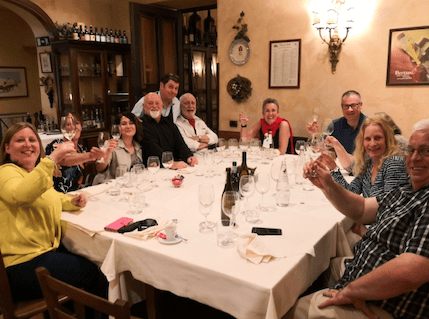
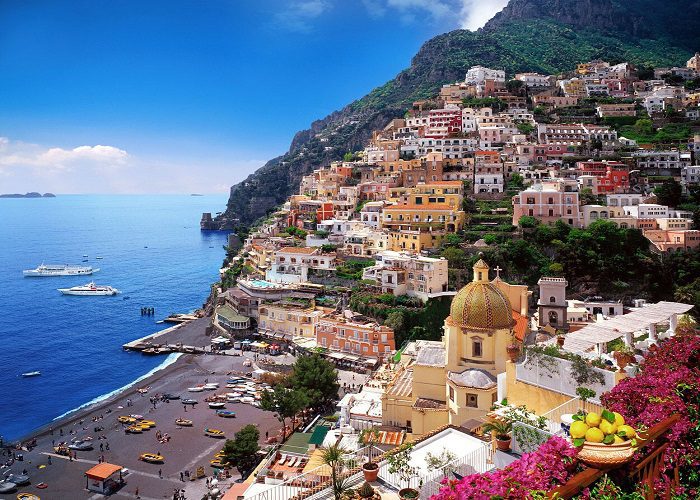


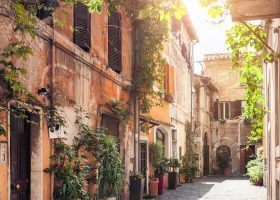
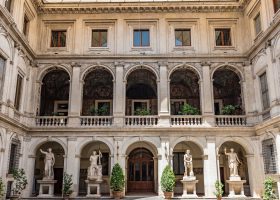
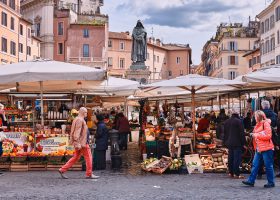
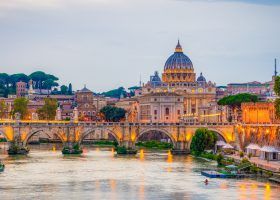
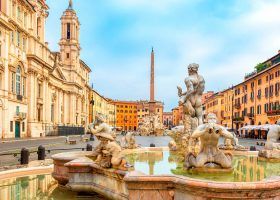
What a lovely description of Italy and Italians you have given to us!
I love to read about the transport, food and most importantly the people.
Awesome work done! Keep them coming!
Ciao Tanisha! What a lovely comment. We are so happy to provide you with helpful tips for your vacation!
A very informative article. Thank you so much for sharing these things.
Ciao! Thanks so much for reading our blog! It’s our mission to provide you with the most useful information possible for your trip.
Nice quality post. Thumbs Up from my side. Special thanks to theromanguy for sharing this valuable information. Once again appreciated!
Nice tips. I’d add the 48 euro fixed rate from the airport to the centre as the best option if there are at least 2 people. By the time you take the train then Metro or taxi from Termini it just about equals out.
Thanks for the tip, Gary!
Rome really such a beautiful city, wish more people will be able to experience it. Thanks for the insightful article.
It is nice you included few basic lines of Italian language everyone should know when visiting Italy or and other country. People are so friendlier to you if you can say “Hi” to them in their language.
Hey, thanks for sharing this, I enjoyed reading it looking forward to my next trip to Italy.
Admiring the time and energy you put into your blog and detailed information you provide.
thank you – very helpful and have taken notes for our trip 🙂